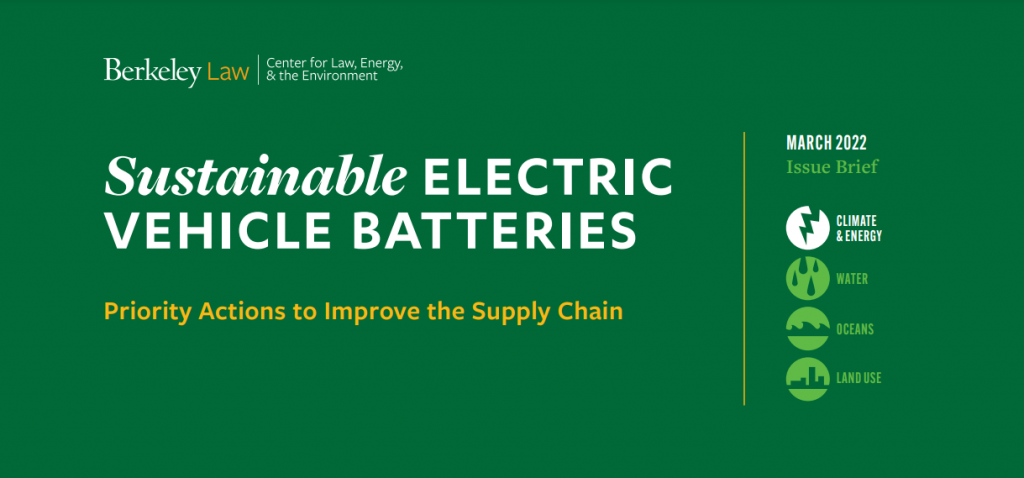
Building the mineral supply chain needed to deploy electric vehicles (including cars, buses, bicycles, and scooters) on a massive scale, if done without planning and engagement, could exacerbate environmental and social harms to communities in countries and regions where minerals are mined and processed (and, to a lesser extent, manufactured and later recycled) into usable batteries. A typical electric vehicle battery requires an array of minerals, including lithium, cobalt, and nickel, among others. Many of the locations with the richest supply of these resources are in countries or near communities with histories of governance challenges and exploitation of local and indigenous communities for resource extraction.
Governments, companies, communities, and civil society organizations face a daunting challenge: increase electric vehicle adoption and battery production, while ensuring the highest level of protection for human rights, community consent and input, and the environment.
To address this challenge, UC Berkeley Law’s Center for Law, Energy and the Environment (CLEE) convened experts in December 2021 to discuss opportunities for increased advocacy and collaboration and to identify policy challenges and opportunities. Our new policy brief highlights key solutions including battery labeling standards, mining law reform, and increased technical assistance. Convening participants identified opportunities for advocates and industry leaders to improve international coordination, advocacy efforts, community engagement, and circular economy practices.
Key barriers and solutions include:
- Barrier 1: Poor supply chain governance. Policymakers lack comprehensive and targeted governance strategies to minimize harm at each stage of battery material’s lifecycle.
- Example solution: Strengthen binding measures. Enhancing binding legal and regulatory measures would support enforcement while promoting global consistency around supply chain sustainability expectations.
- Barrier 2: Lack of attention to community needs and human rights. Current mineral supply chain systems too often fail to incorporate the rights, priorities, and needs of vulnerable groups and communities impacted by mining and processing activities, as well as the transportation activities that support movement of minerals (such as additional pollution from construction and transportation vehicles, or noise from new roads).
- Example solution: Bolster technical assistance and funding. Advocacy organizations, philanthropic organizations, research institutions, and governments could allocate more resources towards supporting human rights and community priorities through funding and technical assistance.
- Barrier 3: Lack of incentives for circular economy practices and demand reduction. A lack of emphasis on circularity, and on strategies to minimize the projected demand for new battery materials while still achieving transportation decarbonization, poses a barrier to a sustainable supply chain that promotes human rights and environmental protection.
- Example solution: Set recycled content targets. Implementing targets for incorporating recycled materials into new battery cells could promote market demand for recycled materials over newly extracted materials.
For a full set of solutions and to learn more, see the policy brief here.
Cross-posted and adapted from co-author Katie Segal’s blog on Legal Planet.


